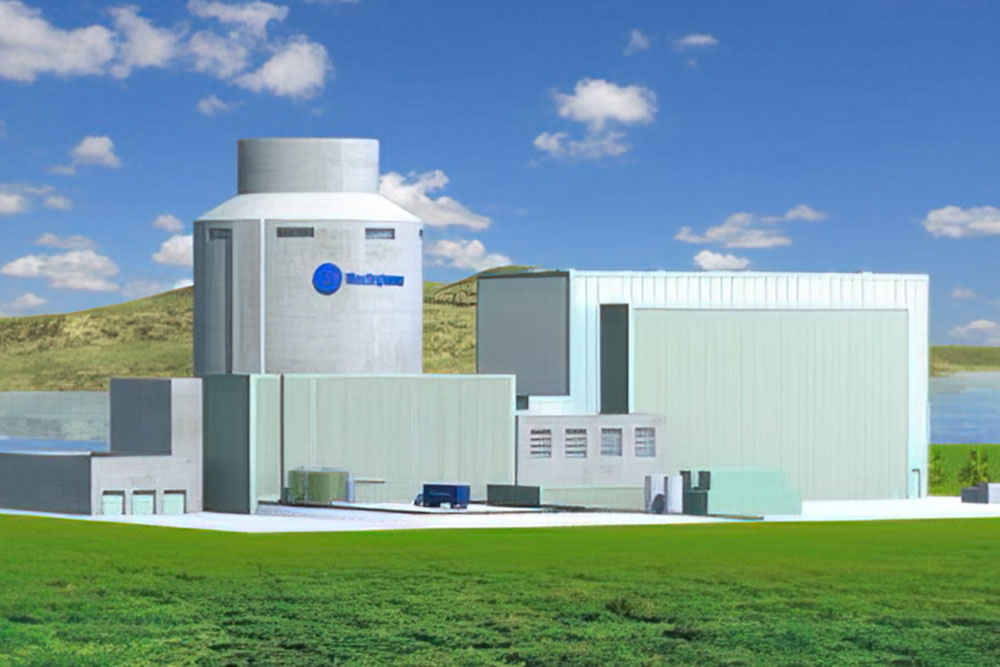3 Questions: Koroush Shirvan on updated costs for the AP1000 nuclear reactor and the role it will likely play in a decarbonized economy

Intro
Despite being the only nuclear reactor that could start construction in the next few years, the AP1000 has gained traction only in the global market and still has not found an adequate foothold in the United States. This is a shame because its construction and operational features are impressive, says Koroush Shirvan, Atlantic Richfield Career Development Professor in Energy Studies at MIT NSE. The AP1000 is especially worth investing in as U.S. energy demand increases and public and private stakeholders are pushing decarbonization efforts.
To rekindle interest in the AP1000, Shirvan published an elaborate cost estimate for the reactor in a report published by the Center for Advanced Nuclear Energy Systems (CANES). A previous iteration accurately predicted the cost and construction time estimates for the U.S. AP1000 projects and pointed to the specific advantages of the reactor for global markets. After the report’s publication, China and Poland began deploying the AP1000. Bulgaria has also announced it would adopt the technology.
Shirvan updated the report in 2024 to reflect a post-COVID landscape shaped by costs and supply chain challenges.
What is the AP1000 and what is its history in the United States?
AP stands for Advanced Passive. Designed by Westinghouse, it’s a modern generation of pressurized water reactors that operate around the world, including in the United States and China. Over 70% of the ~400 reactors in the world are pressurized water reactors and almost 90% of the ~60 reactors under construction today are also large pressurized water reactors.
During the so-called nuclear renaissance, in the early 2000s, several AP1000s were being planned. But then the price of natural gas went down and the costs for nuclear reactor construction went up and most of the orders for nuclear reactors were canceled. The only surviving projects were four AP1000s: two at the VC Summer site in South Carolina, which remain unfinished; and two at the Vogtle site in Georgia. The ones in Vogtle have been completed after about a decade.
You have been tracking the electricity generation costs of the AP1000 and just updated them. What are the factors involved in such calculations and why is this an important exercise?
For the last 15 years, the United States has been asking ‘What’s the future of nuclear energy here? Do we try to find another technology?’ The government has pumped billions of dollars in looking at alternatives.
Concurrently, there has been significant momentum on the global stage toward nuclear energy. Many countries that were against nuclear energy are now leaning toward it. They too are asking which technology they should adopt.
Costs are a significant factor when deciding if nuclear energy—and the AP1000—is the right fit. Electricity generation factors in construction, operation and maintenance, and fuel costs. The last two are recurring expenses for the lifetime of the plant, which is likely at least 100 years for the AP1000. Construction costs dominate electricity generation expenses for only the first 20 to 30 years, after which they are paid off.
My study shows that operation and maintenance and fuel costs for the AP1000 are the lowest among all existing and proposed nuclear technologies. Many shortsightedly ignore the lifetime costs and adopt technologies that have lower total upfront investment. Such a strategy is ill-advised. Many countries adopted it during the early decades of nuclear energy. But high operation and maintenance and fuel costs resulted in early closure of the smaller reactor deployments and the large water nuclear technologies ended up on top. So you have to wonder, if the lack of real progress with the AP1000 today is because nuclear customers are simply using nuclear energy as cover while building natural gas (133 plants in the works in the US) and maintaining their large coal power plants beyond 2030.
What is the relevance of these cost findings with respect to decarbonization?
As of today, there are no new power sources that can deliver 24-7 carbon-free electricity year-round and maintain current electricity generation costs. Almost every decarbonization scenario says that the prices of electricity will increase.
If net-zero targets are to be met, many nuclear technologies can help stabilize the price of energy generation. Indeed, one of the most important findings of the AP1000 cost estimate is that its lifetime costs for electricity generation after maturity averages to be what we pay in the United States today. It completely prevents the projected increase in energy prices. However, maturing the AP1000 will require improved project management and execution as well as risk-sharing and government subsidies at a level that renewables have received to reach maturity.
Hopefully this updated report will shed accurate light on the promise of nuclear energy, especially given its big role in decarbonization. I hope the community can use it as an effective resource planning tool.
November 2024. Written by Poornima Apte. Rendering from Wikipedia
